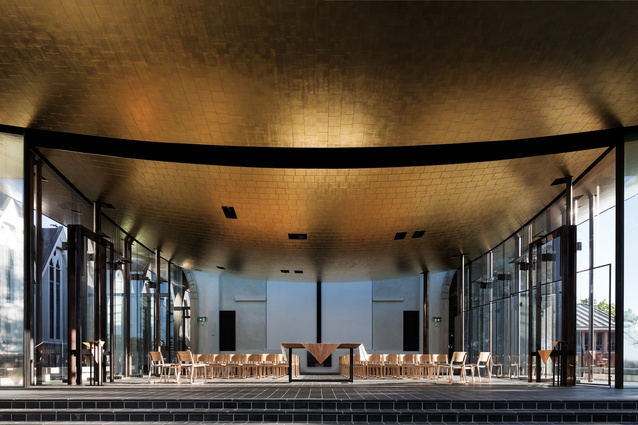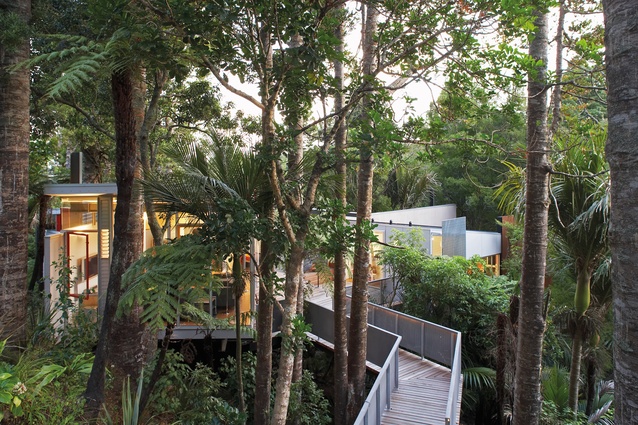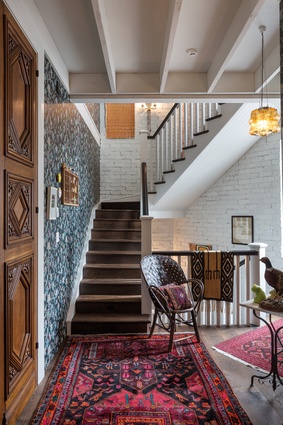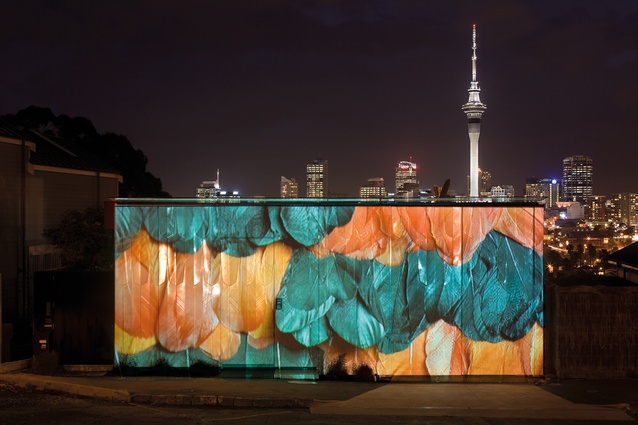Twenty years of Urbis: Part two
Part two of Twenty Years of Urbis brings you six more favourite projects from the last 20 years from Kiwi architects, designers, and industry media professionals. Read part one here.
Bishop Selwyn Chapel – Auckland, 2017 by Fearon Hay Architects
The competition to complete Auckland’s Holy Trinity Cathedral sought to construct a new chapel on the ridge-line site and, in so doing, complete the spatial programme of the cathedral’s original 1888 vision. When I first saw Fearon Hay’s competition-winning renderings, they seemed to be impossibly poetic, with a thin gold line seemingly floating above the space.
It was incredibly ambitious and quite sublime. Somehow Fearon Hay managed to translate the concept flawlessly and effortlessly, with incredible deftness and skill. This is why I see this as such a successful project… because it appeared to gain magic through the process. The finished building is incredibly powerful and yet deferential at the same time.
– Lance Herbst, Herbst Architects | See more here…
O’Sullivan Family Home – Auckland, 2009 by Bull O’Sullivan Architecture

This house is small, warm and playful, with the experimentation of a good architectural mind evident everywhere, even in the smallest places. There is a clear social component in the way it is laid out and with the architect, Michael Sullivan’s, obvious connection to the neighbourhood, where locals helped out with the actual construction. For such a small house, it is packed full of fresh architectural thinking and I would predict that many New Zealand architects have studied and drawn influence from it.
– Gerald Parsonson, Parsonson Architects | See more here…
McCahon Artist’s Residence – Titirangi, 2007 by Bossley Architects
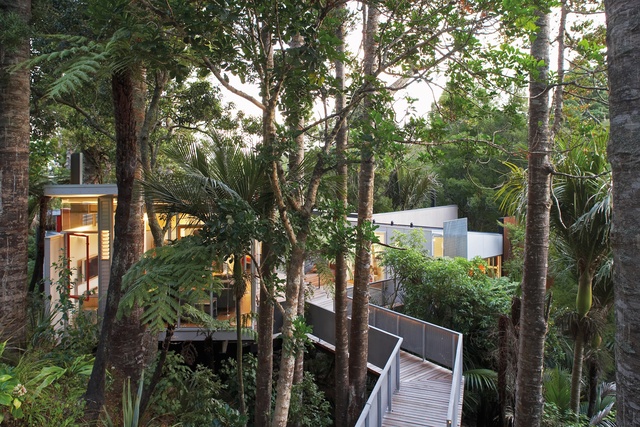
Amongst all the concerns over kauri die-back, it’s hard to believe we cleared our forests more quickly than was the case anywhere else in the world. It was so fast, in fact, that our architecture visibly derives from clearings, with the bush sawn, clipped, pruned and kept at arm’s length. Not so Pete Bossley’s McCahon Artist’s Residence in the kauri forests at Titirangi on the western edge of Auckland. As if on point, a visit starts at the little cottage in a clearing where Colin McCahon lived, painted and, presumably, found time to keep the bush at bay.
The cottage is now a wonderful museum and, from down here, it is immediately apparent how insightful and poetic Pete’s alternative is for building in a forest. His artist’s residence has no clearing; it floats high in the trees, inflecting, bending and slipping past trunks. Here, the forest isn’t just close, it’s drawn inside. If the best architecture both uplifts and makes you think, here I felt as if I were with the birds and part of the forest. Imagine if New Zealand architecture had derived from buildings like this?
– Jeremy Smith, Irving Smith Architects | See more here…
Freemans Bay Townhouse – Auckland, 2010 by Paul Brown & Associates

The house is on an anonymous side street, behind a little café designed by the same architect. Seven or eight years ago, I lived near the house; I’d watch it being built and wonder what it might be. On the outside, the house is plain and undemonstrative – no big deal, just a piece of the wider cityscape. It’s flush to the pavement, its façade reads as a wall and its shutters protect against prying eyes.
It could be an ordinary building on an ordinary street in any number of European cities – which is a good thing. Inside, though, the house is rich and even fruity. It’s a totally domestic realm in which the personal taste of the interior designer is given unfettered expression. In the sheer unexpectedness of its delight, the house would surely charm the most humourless modernist.
– John Walsh, former managing editor of Urbis (2002–2011); current Communications Manager at the New Zealand Institute of Architects
Routeburn Shelter – Queenstown, 2008; landscaping by Blakely Wallace Associates, architecture by Wyatt + Gray Architects

This understated project reads like an intervention within the wider landscape. It is simple and shows that extremely good judgement does not have to extend to designers showing tricks left, right and centre (and that humility is a virtue). I first encountered it through widespread coverage at the time in Landscape Architecture New Zealand magazine, and via the NZILA awards, but I experienced it firsthand when I walked the Routeburn four years ago.
It is essentially grass, gravel and a comparatively limited number of well-chosen plants that act as a transition through to the track beyond (on the Glenorchy side). It reminds me of some of the best of modernist Scandinavian landscape architecture, such as that of C. Th. Sørensen. He was a practitioner whose career spanned much of the 20th century, and whom I admire greatly for the elemental feel of his work and the interest expressed in the social purpose of his projects.
– Philip Smith, O2 Landscapes | See more here…
Mai Mai House – Auckland, 2007 by Patterson Associates

This much-talked-about two-bedroomed dwelling, known as Mai Mai or duck hut, is a multi-award-winning house. Dubbed ‘the best little property in New Zealand’, it was selected as one of the best 16 houses in the Barcelona World Architecture Awards 2008. You cannot see into it from the road but, once inside, you are immediately blown away by the view. As if you were in a glasshouse, you can see the entire city as from a perch.
Typical of all work from Andrew Patterson’s practice, there exists a magical star quality. It is both simple and sophisticated – urban yet ethnically inspired. The feathery motif on its exterior white fibreglass walls is famous for the images projected on it at night. Patterson projects work with clean lines and marry natural materials like wood, glass and stone in a powerful-but-understated way. This iconic house has true class and is grounded in its sense of place – all in all, a compelling solution to compact living on a restricted city site.
– Kirsty Robertson, founding editor of Urbis (1998–2005) | See more here…

